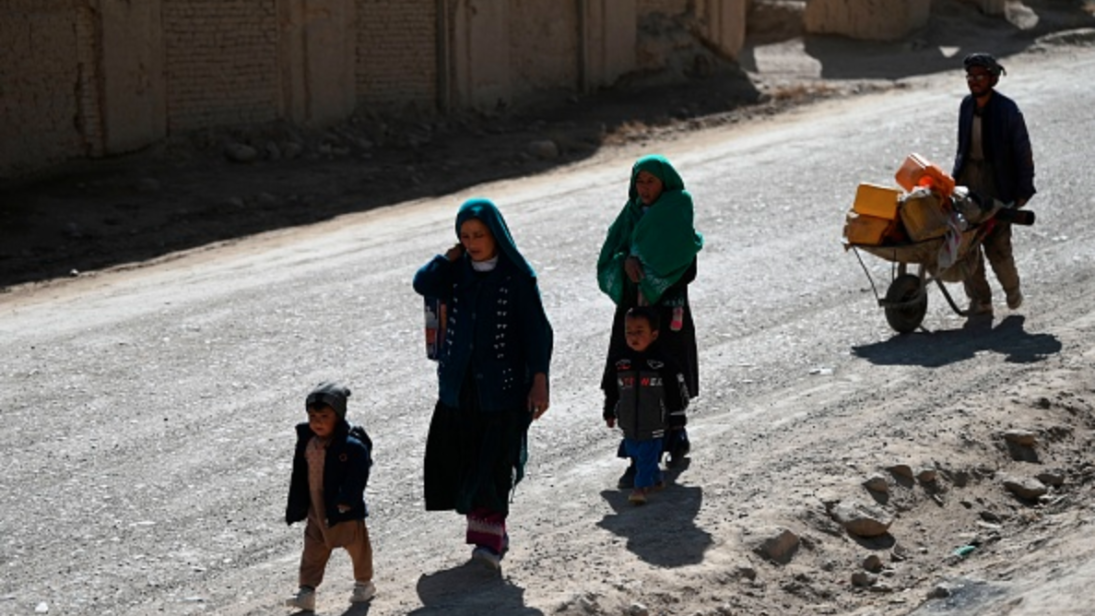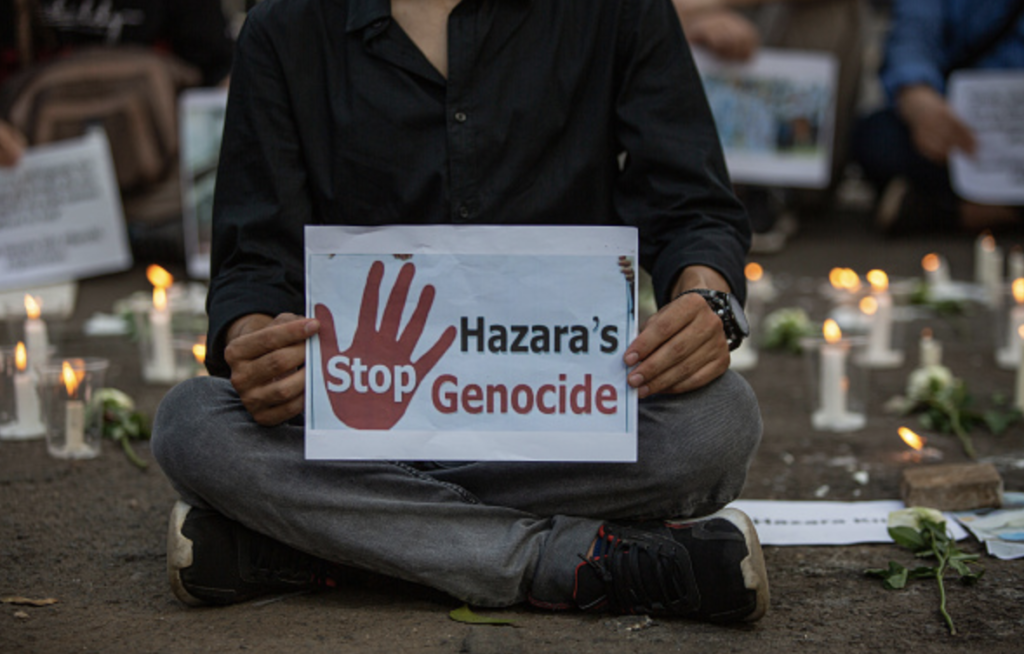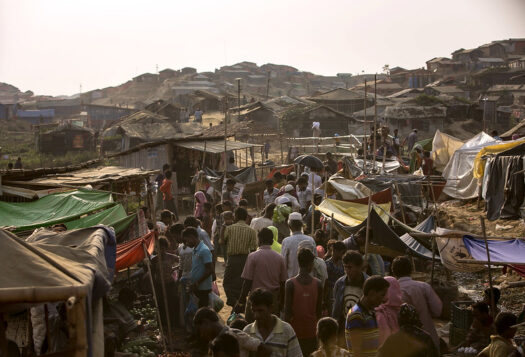
In May 2021, three explosions at Sayed-ul Shuhada high school, located in a mainly Hazara neighborhood west of Kabul, rocked the city, killing nearly 100 students and wounding 150 others, overwhelmingly teenage girls under 18. The attack was followed by another string of target killings in Dasht-e-Barchi. These deliberate attacks worsened the situation to the extent that drivers began refusing to let Hazara passengers in their cars, lest their cars become targets. The recent incidents are especially alarming given the historical context of Hazara persecution, which has persisted since Afghanistan’s Pashtun emir committed genocide and endorsed a policy of ethnic cleansing against the Hazaras in the late nineteenth century. Enslavement and historical oppression ensued. The recent and ongoing attacks targeting the Hazaras has led prominent scholars and thousands of users to join the #StopHazaraGenocide campaign on Twitter and protests around the world to say that the killings constitute a genocide and that responsible entities must act, in turn, to prevent further catastrophe.
As U.S. and NATO troops withdraw from Afghanistan, they leave behind a fragile legacy of accomplishment and deep resentment. Many Afghans believe they are being abandoned by their strategic partner and allies. The Hazara community faces an especially gloomy future: an existential threat to their wellbeing in the form of systemic oppression and marginalization. The series of attacks that began in 2015, singling them out for their ethnic identity and religious affiliation, clearly indicates that the Hazaras are experiencing an ongoing genocide according to International Criminal Court (ICC) definitions. In the absence of international troops and a commitment from the United Nations, the scale of this genocide will only increase, demanding concerted international humanitarian action.
The Ongoing Targeted Killings of Hazaras: Genocidal Intentions
An intersection of elements and circumstances involved in Hazara persecution meets no fewer than ten stages of genocide, including classification, discrimination, dehumanization, and denial. Series of attacks targeting the Hazaras at schools, hospitals, educational centers and on the streets have imposed a living condition that itself “cause[s] serious mental harm to members” of the community. The extent of the collective trauma and the fear of “being chased by death even to their homes” reveals the severity of their neighborhood’s circumstances.
The Hazara community faces an especially gloomy future: an existential threat to their wellbeing in the form of systemic oppression and marginalization.
The patterns of killing and historical subjugation indicate genocidal intent, in which bodily harm and imposing a psychologically insecure atmosphere are both aims. The most recent attacks are also a clear means through which the Taliban are perpetuating the Hazaras’ intergenerational trauma. The series of target killings intensified in 2015 when the Islamic State of Iraq and Syria-Khorasan Province (ISKP) singled out 31 Hazara passengers and later beheaded seven of them, including 19-year-old Shukria Tabasum. Since then, there have been many instances in which perpetrators have discriminatively targeted Hazaras or their neighborhoods. Repeated attacks on soft targets—maternity hospitals, schools, sports centers, mosques, wedding halls and protests—have resulted in hundreds of casualties, adding to collective cemeteries on the hills of Kabul. This includes: an attack on Mawood Educational Center in 2018, part of which more than 50 students were killed; an attack on Kawsar Danish Educational Center in 2020 that left more than 24 dead and 57 wounded; an attack on the maternity ward of a hospital in Dasht-e-Barchi, killing infants, newborn babies and their mothers; and most recently, on June 9 in Baghlan province, an attack in which gunmen shot 10 mine cleaners dead, specifically targeting members of the Hazara ethnic group working for Hola Trust.
The Taliban and ISIS have publicly announced plans to target Hazaras and claimed responsibility for most past cases. Mullah Niazi who led the massacre of Hazaras in 1998, publicly announced: “I will kill thousands of Hazaras. Let it be a lesson in their history and to future generations.”
The government has either been unable to step in to defend or has not had the will to do so. The Hazaras are even suspicious of the government for cracking down on their peaceful protests, which they believe makes them complicit in the deliberate killings. On January 29, the government dispatched special forces to Behsud district of Maidan Wardak province and suppressed a peaceful protest there, killing 11 people and injuring and detaining many others. Though Afghanistan’s Human Rights Commission (AIHRC) later confirmed the protest had been peaceful, the government, instead of holding the leading commander accountable, promoted him into another position. More disturbingly, the clash between the government and local people in Behsud reached a stage in which government officials overtly ran campaigns to dehumanize them and justify the killings.
Post-Withdrawal: Targeted for Progressive Values
The Hazaras’ ethnic identity and their religious affiliation are not the only factors that have made them targets of a genocide. They are also classified as a “corrupt[ed]” group because they have openly embraced liberal values. The Taliban perceive the Hazaras’ determined commitment to progressiveness as a threat to their restrictive society.

The Hazaras fear what will become of their community should the Taliban return to power, a plausible scenario given their swift territorial advancement, even before the complete withdrawal. The Taliban massacred thousands of Hazaras from 1996 to 2001 and deliberately targeted them after 2001. The Taliban consider the Hazaras heretics, specifically “Rafidi,” a derogatory term radical Sunni Muslims use to refer to Shia Muslims. In the post-2001 era, Hazaras have been harbingers of democratic values, civic activism and have made strides towards a more open society—the international community’s presence allowed for a safer and fairer space for their contribution. Despite these strides, they were openly discriminated against on all fronts, from education to political participation and resource distribution. Accumulated dehumanization and hate speech over the years found its way into different layers of the society. The government reneging on its responsibility to provide security—particularly in the face of increasing attacks—has undermined the Hazara community’s optimism and agency to continue their progressive way of life.
As international troops, and, in some cases, diplomatic missions leave Afghanistan, the Hazaras are likely to experience more targeted violence, as more territory falls to the Taliban. The Taliban have reportedly committed mass killings, banned girls’ education, and put restrictions in place in their controlled territories. One must also consider non-Taliban conservative hardliner Afghans when discussing anti-progress sentiments. Just as the hardliners resisted and eventually ousted Amanullah Khan in the early nineteenth century and later resisted the Soviets and their leftist counterparts within Afghanistan, so too will they oppose and perhaps contribute to violence against progress-seeking Hazaras.
The Way Forward
Protecting the Hazaras in Afghanistan is not only a moral choice and responsibility—and the innate duty of the United Nations—but also a strategic move at both the domestic and international levels. Yet the UN has a shaky record at best when it comes to protecting civilians in armed conflict zones or identifying and stepping in to end genocides.
The international community must exercise its power and invest in the Hazaras social development across the country.
As the Afghan state weaponizes the distribution of natural resources to discriminate against the Hazaras, the international community must exercise its power and invest in the Hazaras’ social development across the country. In committing to such a support, the international community would essentially be investing in a success story that could change a model for response to future atrocities. Other practical measures include the Afghan government, the international community and the United Nations officially acknowledging the killings as genocide, or at minimum investigating the crimes as such.
The international community and the UN must not stand by in the face of atrocity, as they did during the 1994 Rwandan Genocide. As the Taliban advances, the Afghan state’s inability to prevent attacks on innocent civilians (and its complicity in violently suppressing peaceful protest) is evidence of the country’s violent unravelling. As the Taliban themselves do not constitute a homogenous group and are not following a chain-and-command hierarchy, the international community must not allow the Taliban leadership’s overtures in Doha—about their plans to observe the international conventions—to cloud their thinking. The Hazaras need international support, and they need it immediately.
***
Image 1: Wakil Kohsar/AFP via Getty Images
Image 2: NurPhoto via Getty Images


